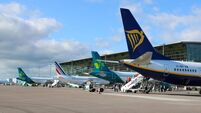Lloyd’s records £697m half-year losses after series of disasters
And Lloyd’s, concerned European governments may be unable to support lenders in a worsening debt crisis, has pulled deposits in some peripheral economies as the ECB provided dollars to one eurozone institution.
The specialist insurance market, which is made up of 88 underwriting syndicates, incurred £6.7bn (€7.6bn) in claims after major natural disasters in Australia, New Zealand, Japan and the United States.
Lloyd’s said 2011 was set to be the second most expensive year ever for insurers, but added that its own claims were being met without any call on its central fund — its fund of last resort.
Chief executive Richard Ward said: “These are tough times for the insurance industry, but we are well positioned to handle them.”
The £1.2bn (€1.37bn) of predicted claims from the Japanese tsunami and earthquake made it the fourth biggest event to impact on the market. The most expensive was Hurricane Katrina in 2005, which caused claims worth €4.3bn (€3.15bn).
The earthquake in New Zealand and Australian floods are expected to cause claims of £860m (€980m) and £200m (€228m) respectively.
Yesterday’s loss for the six months to June 30 — the worst in the seven years that Lloyd’s has published results for the half-year — compares with profits of £628m (€716m) a year ago, when it faced claims from the Chile earthquake and Deepwater Horizon oil rig explosion.
Lloyd’s has also had to cope with challenging investment conditions, resulting in a return of £548m (€624m) compared with £597m (€680m) a year earlier and £708m (€807m) in 2009.
The Lloyd’s market has shown in recent years that it is more than able to cope with catastrophes.
















